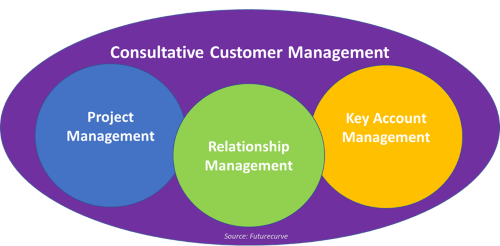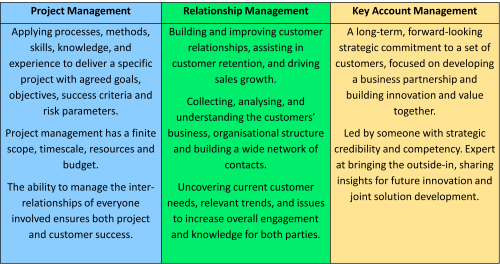Customers are tired of being mismanaged. Are yours?
insight by helen blake
Customer management is a specific discipline, yet one often designed around the company rather than the customer.
Here at Futurecurve, over the last 20 years, thousands of customers have shared their experiences of being managed by B2B companies. Customers have a clear view on how they want to be managed - get it wrong and we run the risk of misaligning our approach with what customers expect.
My view is that customer or client management is about standing in our customer shoes, orchestrating a combination of processes for the customer. Some customers will want the transactional approach when there is no commitment either way; others love the consultative orientation that comes with deeper working relationships with key people.
The differences between the consultative rather than transactional management styles are very clear to customers. They might not know the names we attach, but they know their experiences and are baffled when the businesses they work with get them confused.
Here at Futurecurve we believe there are 3 consultative customer management styles based on what customers tell us they want:
In our experience, larger complex customers expect to see different individuals with appropriately differing skill sets leading these processes, interacting with each other and with them in a clearly defined and coordinated way. In other words, specialists understanding and maintaining their role when interacting with customers. If customers become confused about the way you manage them, or feel you are not investing in your working relationship with them, their dissatisfaction will grow. If a customer perceives that you are just not interested in them beyond the current project, they will start to look around at what others have to offer.
Simply put, the project manager builds the operational relationship; the relationship manager builds personal rapport, the deeper knowledge of the customer, greater business understanding to realise wider sales opportunities; and the key account manager looks towards the longer term, scoping future business strategy and roadmaps, bringing insight and innovation to customers so that, together, they can design solutions for shared success going forward.
Here are our definitions for the differing consultative customer management roles:
Each of these roles is underpinned by a different type of working relationship and this tends to be where misalignment can happen. Project Manager relationships by definition are operationally focused, interfacing with operational managers across the customer organisation. The Relationship Manager and Key Account Manager relationships are likely to be with more senior executives and Board members, requiring different conversations, perspectives and requirements than those at the project management level.
To keep customers happy and well-managed, it is important that structure and clarity is in place for customer-facing team members to understand their roles and how they interlink, enabling collaborative working and information sharing for the success of their customer as well as the business.
If you’re interested in having an exploratory conversation about your customer/client management processes and how we can help align them to create a win-win for everyone, don’t hesitate to get in touch: helen.blake@futurecurve.com or message me on LinkedIn linkedin.com/in/helenblake



